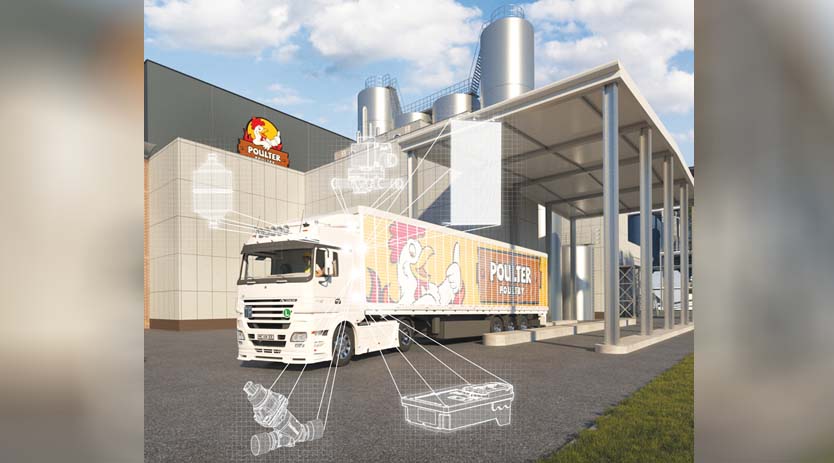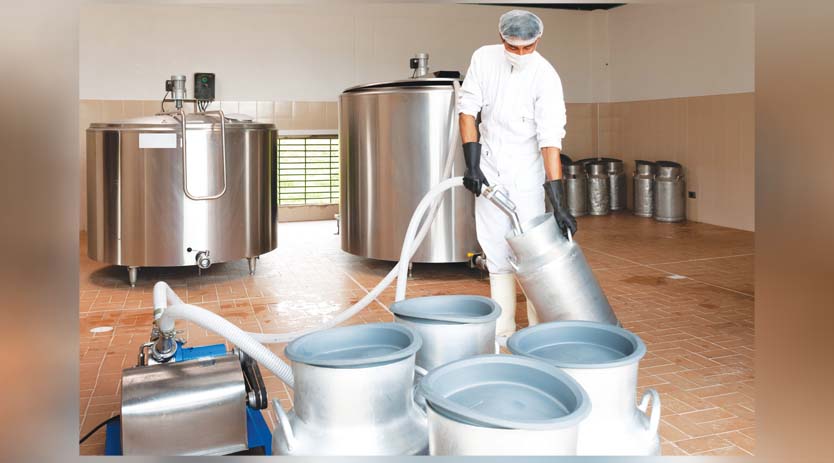In the industrialised part of the world, infrastructure is already in place. Still, therewill be a lot of focus on energy efficiency, low GWP refrigerants and monitoring of the food as it moves along the cold chain.
Digital capabilities enable end-to-end supply chain management in the cold chain.
Monitoring the cold chain from end to end will require collaboration from all players in the cold chain. Just one black spot can significantly damage the perishables. As we see it, it’s a partner game where companies will need to cooperate to succeed. This means we will likely see more traditional refrigeration companies collaborating with logistics providers, IT companies, growers and food retailers. Danfoss is currently in the process of understanding the cold chain and where the main losses happen to find the right partners. Danfoss can be an active player in the cold chain and potentially help food retailers significantly reduce food losses.
Refrigerant techniques for efficient cooling from farm to fork
This depends on where in the world we are talking about. In the developing world, it’s mainly a matter of building up the infrastructure with cold storage, cold rooms, reefers, refrigerated trucks and vans etc. The infrastructure is already in place in the industrialised part of the world. Still, there will be a lot of focus on energy efficiency, low GWP refrigerants and monitoring of the food as it moves along the cold chain.
Scope of temperature-measuring instruments for transportation
This is to keep the food safe and ensure it’s fit for human consumption once it reaches the consumer. Monitoring the temperature during transportation is a legal requirement in many countries, where a tamper-proof set of measurements needs to be logged in the system. Often, we also see manufacturers measure one more set of temperatures to improve the system’s control and detect potential issues before they occur. Minimising food losses will have a positive impact on many things-
• It will likely improve the farmer’s earnings and save money for other players in the cold chain.
• We will need to grow less food and consume less energy, making it easier to decarbonise.
• If less food needs to be grown, less water is wasted, which can be very beneficial in areas with water scarcity.

Temperature monitoring and alert systems to ensure supply chain visibility
The major players in the cold chain all have systems that monitor the temperature of the perishables. The monitoring systems can feed a constant flow of information to the operator / logistic company on the refrigeration system’s location, temperature, and health condition. This also means that if something is out of range, it can either be adjusted remotely or the transport can be sent to a repair shop before damage is done to the cargo. The monitoring also allows diverting transport to a different location, e.g., a cold storage facility, to keep the food safe in case the refrigeration system requires too much time to repair.

The best suggested low GWP refrigerants for transport
We know that Industry players are working on CO2 and Propane for refrigerants, which of course, has the lowest GWP. CO2 has some efficiency drawbacks at high temperatures, which could mean higher energy consumption during operation, and hence we will see increased CO2 emissions from operation rather than from leakage of refrigerants. Propane is flammable, and legislation only allows relatively low charges in refrigeration systems. Propane is likely to be something starting in refrigerated vans. The European Union will issue new legislation concerning refrigerants in transport systems in H1 2023. Once we have more clarity on the legislation, other refrigerants could be attractive if they have a GWP of less than 150-250.
Advanced temperature-controlled technologies to preserve perishable commodities
We see a shift towards more efficient and electrified transport refrigeration units, e.g., by using electronically controlled expansion valves and speed-controlled fans/compressors. This reduces operational cost and total cost of ownership but usually also means a higher initial cost. Remotely monitoring the cargo can bring huge savings as operational inefficiencies can be minimised.
Cookie Consent
We use cookies to personalize your experience. By continuing to visit this website you agree to our Terms & Conditions, Privacy Policy and Cookie Policy.















